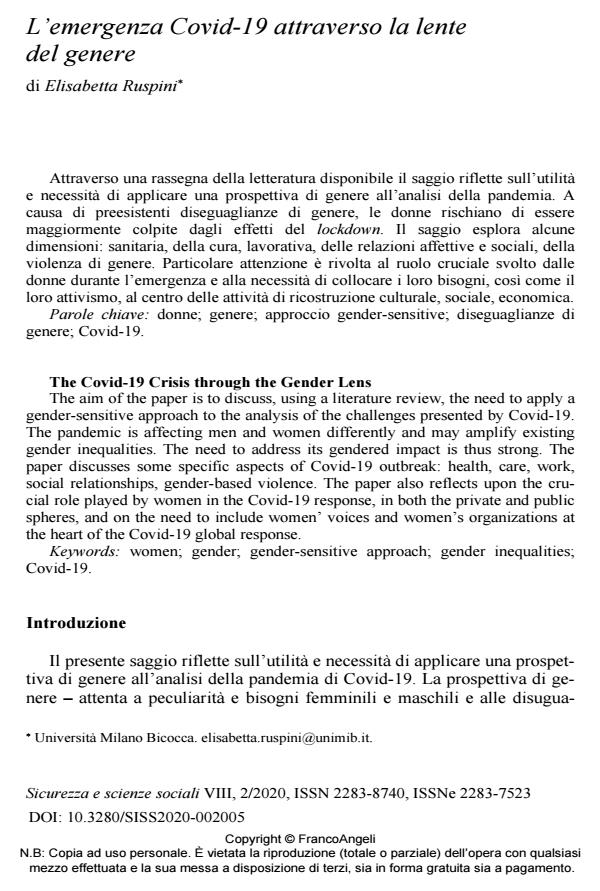L’emergenza Covid-19 attraverso la lente del genere
Titolo Rivista SICUREZZA E SCIENZE SOCIALI
Autori/Curatori Elisabetta Ruspini
Anno di pubblicazione 2020 Fascicolo 2020/2
Lingua Italiano Numero pagine 17 P. 42-58 Dimensione file 236 KB
DOI 10.3280/SISS2020-002005
Il DOI è il codice a barre della proprietà intellettuale: per saperne di più
clicca qui
Qui sotto puoi vedere in anteprima la prima pagina di questo articolo.
Se questo articolo ti interessa, lo puoi acquistare (e scaricare in formato pdf) seguendo le facili indicazioni per acquistare il download credit. Acquista Download Credits per scaricare questo Articolo in formato PDF

FrancoAngeli è membro della Publishers International Linking Association, Inc (PILA)associazione indipendente e non profit per facilitare (attraverso i servizi tecnologici implementati da CrossRef.org) l’accesso degli studiosi ai contenuti digitali nelle pubblicazioni professionali e scientifiche
Attraverso una rassegna della letteratura disponibile il saggio riflette sull’utilità e necessità di applicare una prospettiva di genere all’analisi della pandemia. A causa di preesistenti diseguaglianze di genere, le donne rischiano di essere maggiormente colpite dagli effetti del lockdown. Il saggio esplora alcune dimensioni: sanitaria, della cura, lavorativa, delle relazioni affettive e sociali, della violenza di genere. Particolare attenzione è rivolta al ruolo cruciale svolto dalle donne durante l’emergenza e alla necessità di collocare i loro bisogni, così come il loro attivismo, al centro delle attività di ricostruzione culturale, sociale, economica.
Parole chiave:Donne; genere; approccio gender-sensitive; diseguaglianze di genere; Covid-19.
Elisabetta Ruspini, L’emergenza Covid-19 attraverso la lente del genere in "SICUREZZA E SCIENZE SOCIALI" 2/2020, pp 42-58, DOI: 10.3280/SISS2020-002005